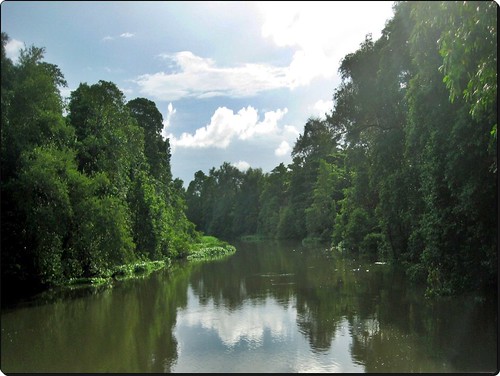
Nicaragua is home to a rich and diverse set of geometrics, biodiversity and a stunning array of plants and animals. Nicaragua is one of the largest of the Latin American countries and is filled with 7 different types of forested lands. Each forested region of the country contains its own bio and ecological diversity. You can explore the subtropical dry forest, tropical rain forest, mangrove forest, wetlands, grass savanna and tree savanna. Each side of the country differs from another so if you plan on living or visiting there make sure you plan a trip across the entire country so you can see and experience it all.
If you travel down the pacific side of the country you will experience mostly dry forest and savanna lands. Then you can make your way north along the coast and travel up into the mountain regions and breathe in the fresh scent of the pine forests. There you can then see or travel along one of central Americas longest river the Rio Coco It runs alongside the mountains that feed it in the north towards Honduras. As you travel further south you will come to the southern part of the country with the second longest river in Central America the Rio San Juan this are hold magnificent wet rain forest as far as the eye can see.
The country to the central and middle area is supreme volcano watching with many lakes, lagoons, and natural ponds. Within this landscape of formed mountains and volcanoes are a number of dormant mountains where on top you can see the crater lakes the two largest are called Lake Nicaragua and Lake Managua. From atop these mountains you can see out into the pacific were a number of doted islands are located. Ometepe Island was originally built by two volcanoes that now lay dormant but there are still a few in the area that are still active.
The climate throughout the country remains fairly constant and hot. Not so much uncomfortable hot unless your along the coast or westward dry lands. But the weather does take some getting used to if you are not use to having dry or humid conditions change rapidly from one day to the next.
With these types of environments and weather patterns it is perfect for some. Nicaragua boasts some of the most creative and dazzling display of wildlife in Central America. There are 1500 species of animals and 12000. Even more so there are routine trips to Nicaragua because there are still discovers made of new species of plants and animals and still undiscovered worlds yet to be seen.
Some of the larger species you will encounter while hiking or driving or camping in Nicaragua are panthers, jaguars’, pumas, deer’s, eagles, and of course toucans. Of course we cannot forget the different types of monkey and amphibians you will also encounter. So be weary of the animals and remember to take precautions when in the jungles. But most of all remember to leave it as you found it and not add to its still unsettled destruction by local land owners.
Nicaragua’s government has done a tremendous job in trying to protect a lot of it ecological and biodiversity in the country. They have the third largest rain forest preserve on the planet with numerous other protected areas. But, because of overpopulation poverty, and economic necessity these areas are still in danger of vanishing off the planet. The major exports from Honduras continue to burn the rain forest for their coffee and sugar Cain along with many other products. So just remember on your trip through Nicaragua’s to keep its nature the same as you left it. That way others behind you can enjoy this wonderfully diverse rainforest and mountains as well.



Ometepe Island


Lake Nicaragua



the Rio Coco


Lake Managua








0 comments:
Post a Comment